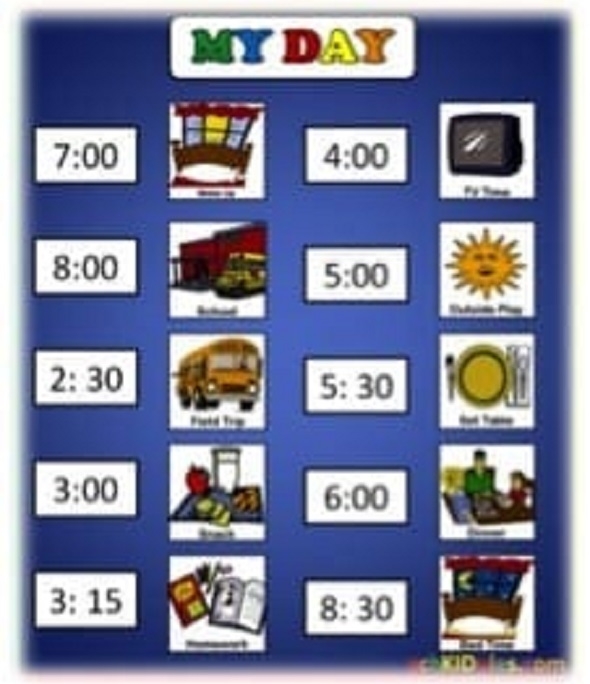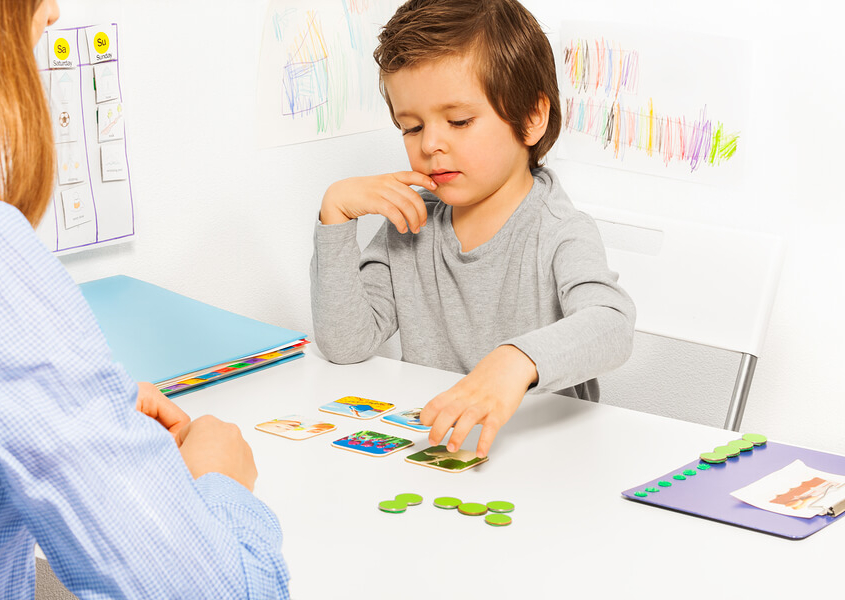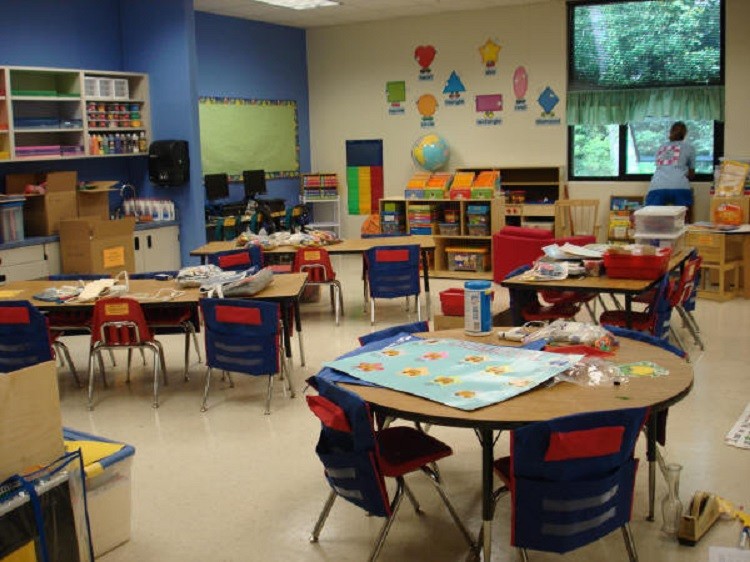Literacy Strategies for Autistic Learners: ABA-Based Reading Support in Southern California

Helping children with autism spectrum disorder (ASD) learn to read is both a challenge and a joy. Many autistic learners show remarkable word recognition skills—sometimes even hyperlexia, where they decode words far beyond their age level. Yet comprehension often lags behind. Parents and teachers can bridge this gap by combining structured phonics instruction with whole-language approaches, while tailoring strategies to each child’s unique profile.
LeafWing Center provides ABA-based literacy support for autistic learners across Los Angeles County, Orange County, and the Inland Empire. Contact the location nearest you to get started.
We will discuss:
- Understanding the Autism Literacy Journey
- How the Big 5 Reading Strategies Support Autistic Children’s Literacy Development
- The Best Program to Teach Autistic Children to Read
- Autism-Friendly Literacy Tools Backed by ABA
- Literacy Strategies for Autistic Children by Ability Level
- How to Choose A ‘Just Right’ Book for a Child with Autism
- Tips for Parents and Teachers
- Key Takeaways: Literacy Strategies for Autistic Children
- How LeafWing Center Supports Autism Literacy
If you are a parent of a child with autism, you already know that reading is not just about letters on a page. It is connection, communication, confidence, and the chance to understand the world in a new way.
And if you have ever watched your child struggle with phonics, or lose interest during story time, or become overwhelmed by too many words at once, you have probably wondered what you are missing. You may have asked yourself why something that seems simple for other children feels so complicated for yours.
Here is the truth.
You are not doing anything wrong.
Your child is not behind.
Your child is not broken.
Your child simply learns differently.
Autistic learners often see patterns that others miss. They notice details that others overlook. They process information in ways that are unique and powerful. When literacy instruction honors these strengths, everything begins to change.
This is why the right reading strategies matter so much.
Not because you need to force your child into a traditional learning style.
Not because you need to push harder.
But because you deserve to understand what actually works for your child.
Imagine your child feeling calm during reading time.
Imagine them recognizing a word that used to feel impossible.
Imagine them smiling because they finally understand a story.
These moments are not small. They are life-changing.
And you deserve support that helps you create those moments.
When you understand how to break skills into manageable steps, how to use visuals that make reading feel safe, and how to build confidence through positive reinforcement, literacy becomes less stressful and more joyful. You are not just teaching your child to read. You are helping them discover their voice.
LeafWing Center is here to guide you with strategies that are evidence-based, compassionate, and designed for real families. You do not have to figure this out alone. With the right tools, your child can grow, learn, and thrive in ways that feel natural and empowering.
Your child is capable.
You are capable.
And together, you can build a literacy journey that feels hopeful and achievable.
Understanding the Autism Literacy Journey
For most children, reading begins with phonics—connecting sounds to letters and recognizing patterns. Over time, the goal is to shift from decoding words to making meaning.
Children with autism often excel at decoding but struggle with comprehension. Research shows that while they can recognize words fluently, they may find it difficult to:
- Understand word meanings
- Analyze sentence structures
- Draw on background knowledge
- Make inferences
- Monitor their own understanding
This means that teaching autistic children to read requires more than phonics—it requires intentional comprehension support.
How the Big 5 Reading Strategies Support Autistic Children’s Literacy Development
Yes, the Big 5 reading intervention strategies
- phonemic awareness
- phonics
- fluency
- vocabulary
- and comprehension
absolutely applies to teaching children with autism to read. These evidence-based components are the foundation of literacy instruction and can be adapted within Applied Behavior Analysis (ABA) frameworks to meet the unique needs of autistic learners. By breaking each skill into small, structured steps and reinforcing progress with positive supports, parents and teachers can help children build confidence and independence in reading.
Many children on the autism spectrum respond well to visual information. Visual information can be processed and referred to over time, whereas spoken communication is instant and disappears quickly.
Here’s how the Big 5 strategies align with autism-friendly instruction:
- Phonemic Awareness: Teaching children to recognize and manipulate sounds in words, often with visual or tactile cues.
- Phonics: Explicit instruction on letter-sound relationships, paired with picture supports and systematic practice.
- Fluency: Building speed and accuracy through repeated readings, echo reading, and errorless learning techniques.
- Vocabulary: Expanding word knowledge with visual aids, real-life examples, and interest-based materials.
- Comprehension: Using social stories, guided questions, and visual organizers to support understanding of text.
By integrating the Big 5 into ABA-based programs, parents and teachers can ensure reading instruction is both research-backed and tailored to autistic learners, making literacy development more accessible and effective.

The Best Program to Teach Autistic Children to Read
When choosing the best program to teach autistic children to read, parents and teachers should look for approaches grounded in Applied Behavior Analysis (ABA). ABA-based reading programs are evidence-based and emphasize structured, step-by-step instruction with positive reinforcement. This makes them especially effective for children who thrive on routine and clear expectations. Programs such as Direct Instruction (DI) and Discrete Trial Training (DTT) are widely used because they break literacy into manageable skills and provide repeated practice until mastery is achieved.
To make reading instruction more engaging and effective, ABA programs often integrate:
- Phonics instruction: Teaching children how letters and sounds connect is critical for decoding words. Phonics, when taught explicitly and systematically, helps autistic learners build a strong foundation for independent reading.
- Visual supports: Picture cues, icons, and illustrated texts reinforce meaning and aid comprehension.
- Errorless learning: Minimizing mistakes early on builds confidence and reduces frustration.
- Positive reinforcement: Rewards and motivators encourage participation and progress.
- Individualized pacing: Lessons are tailored to each child’s strengths, interests, and developmental needs.
Evidence-Based Strategies for Autistic Children
Phonics-Based Approaches
- Direct Instruction in Decoding: Use systematic phonics programs with repetition and visual cues.
- Multisensory Learning: Letter tiles, tactile tracing, and sound-symbol games engage multiple senses.
- ABA Techniques: Break reading into small steps, reinforce progress, and use errorless learning to reduce frustration.
Whole-Language Approaches
- Shared Reading: Read aloud with expression, ask questions, and encourage predictions.
- Storytelling & LEA (Language Experience Approach): Let children dictate stories that are transcribed and read back.
- Repetition: Revisit familiar stories to build confidence and reinforce comprehension.
By combining ABA methodology with phonics, visual supports, and structured reinforcement, these programs not only improve literacy skills but also foster independence and a genuine love of reading. Parents and teachers can feel confident knowing these strategies are backed by decades of research and proven to help autistic children succeed.
Autism-Friendly Literacy Tools Backed by ABA
Supporting autistic children in their reading journey requires practical, hands-on tools that parents and teachers can easily integrate into daily routines. These strategies not only make literacy more accessible but also create positive, engaging experiences that build confidence and independence. By combining visual aids, technology, and structured routines with opportunities for choice and modeling, families and educators can foster a love of reading while reinforcing essential skills.
Practical Tools for Parents & Teachers
- Visual Supports: Diagrams, icons, and graphic organizers make abstract ideas concrete.
- Technology: Interactive e-books and text-to-speech software provide multisensory engagement.
- Social Stories: Personalized narratives teach both literacy and social understanding.
- Routine Reading Times: Predictability fosters comfort and readiness to learn.
- Modeling: Let children see adults enjoying books—it inspires curiosity.
- Library Visits: Choosing books independently builds autonomy and excitement.
When parents and teachers consistently use these tools, reading becomes more than just an academic task—it transforms into a meaningful, enjoyable part of a child’s life. Whether through visual supports, interactive technology, or the simple joy of visiting a library, each strategy helps children with autism connect with stories in ways that feel safe, motivating, and empowering. With the right resources and intentional support, literacy development can flourish and open doors to lifelong learning.

Literacy Strategies for Autistic Children by Ability Level
Every child with autism learns to read differently, and the most effective instruction depends on their current communication and literacy skills. By matching strategies to ability levels, parents and teachers can provide targeted support that builds confidence and maximizes progress. Whether a child is nonverbal, developing early speech, or already reading fluently but struggling with comprehension, tailoring the approach ensures that reading instruction feels accessible and motivating. The table below highlights practical strategies and tools aligned with different learner profiles.
| Profile | Recommended Strategies | Example Tools |
|---|---|---|
| Nonverbal / Limited Speech | Symbol-supported reading, AAC devices, errorless phonics | PECS, speech-generating apps |
| Emerging Verbal Skills | Phonics with visual cues, shared reading, ABA reinforcement | Letter tiles, adapted leveled readers |
| Fluent Speakers with Comprehension Challenges | Whole-language comprehension strategies, inference-building | Graphic organizers, Reading Rockets guides |
| Advanced Readers with ASD Traits | Higher-level comprehension, social-pragmatic reading | Discussion groups, thematic literature circles |
Using ability-based strategies helps families and educators avoid a one-size-fits-all approach to literacy. Instead, it creates a roadmap that grows with the child—starting with symbol-supported reading for nonverbal learners and progressing toward higher-level comprehension for advanced readers. By combining evidence-based methods with individualized tools, parents and teachers can foster meaningful literacy development and empower children with autism to succeed at every stage of their reading journey.
How to Choose A ‘Just Right’ Book for a Child with Autism
Selecting the right book for a child with autism means focusing on both age-appropriate content and the child’s unique learning style. Books with clear illustrations, predictable text patterns, and structured storylines are often the most effective, since many autistic children thrive on routine and visual cues. Choosing stories that connect to a child’s personal interests—such as animals, vehicles, or favorite activities—can also spark motivation and make reading time more enjoyable.
It’s equally important to consider the book’s language and format. Simple, literal wording helps children grasp meaning without confusion, while avoiding overly abstract or figurative expressions until comprehension skills are stronger. Parents and teachers should look for books that balance accessibility with engagement, creating positive reading experiences that build confidence and support literacy development.
Book Recommendations by Age & Spectrum Profile
- Toddlers & Preschoolers (2–5)
- Brown Bear, Brown Bear, What Do You See? – repetition and bold visuals
- Goodnight Moon – predictable and calming
- All My Stripes – affirming story about autism
- Early Elementary (6–8)
- Benji, the Bad Day and Me – emotional regulation
- The Way I Feel – emotion labeling with illustrations
- I See Things Differently – simple introduction to autism
- Preteens (9–12)
- A Boy Called Bat – realistic, respectful representation
- Rules – empathy and perspective-taking
- My Brother Charlie – celebrating strengths and connection
- Teens & Young Adults (13+)
- Can You See Me? – co-written by an autistic teen
- The Reason I Jump – insight from a nonverbal autistic teen
- Different, Not Less – Temple Grandin’s empowering profiles
Tips for Parents and Teachers
- Celebrate small wins—confidence builds motivation.
- Adjust pacing and strategies flexibly.
- Embed literacy into daily routines (bedtime stories, grocery lists, playtime).
- Use stories to teach empathy, self-awareness, and social understanding.
- Choose sensory-friendly books with calming tones and clear visuals for sensitive readers.
Key Takeaways: Literacy Strategies for Autistic Children
- Autistic learners often excel at decoding but need explicit support for comprehension.
- The Big 5 reading strategies (phonemic awareness, phonics, fluency, vocabulary, comprehension) apply directly to autism literacy when adapted with ABA.
- Evidence-based approaches like Direct Instruction (DI) and Discrete Trial Training (DTT) provide structure and reinforcement.
- Practical tools—visual supports, social stories, technology, and routine reading times—make literacy engaging and accessible.
- Matching strategies to ability levels ensures individualized growth and confidence.
How LeafWing Center Supports Autism Literacy
At LeafWing Center, we believe every child deserves the chance to move beyond decoding into true comprehension. Our team integrates ABA-informed reading strategies, tailored book recommendations, and individualized literacy plans to meet each child where they are. Whether your child is just beginning to recognize sounds or is an advanced reader needing comprehension support, we provide structured, evidence-based interventions that foster confidence and a love of learning. By partnering with families and educators, LeafWing Center helps autistic students unlock the joy of reading—and build skills that last a lifetime.
LeafWing Center provides ABA-based literacy support for autistic learners throughout:
- Los Angeles County
- Orange County
- Riverside County
- San Bernardino County
- The Inland Empire
If you’re looking for literacy-focused ABA therapy near you, our team is here to help.
Related Glossary Terms
- Direct Instruction (DI)
- Discrete Trial Training (DTT)
- Picture Exchange Communication Systems (PECS)
- Positive Reinforcement
Other Related Articles
- Autism Communication Strategies
- Social Stories and autism
- Using Visual Supports to Help Students with Autism in the Classroom
- Why does Applied Behavior Analysis (ABA) help children with autism?
Frequently asked questions about ABA therapy
What is ABA Therapy used for?
ABA-based therapy can be used in a multitude of areas. Currently, these interventions are used primarily with individuals living with ASD; however, their applications can be used with individuals living with pervasive developmental disorders as well as other disorders. For ASD, it can be used in effectively teaching specific skills that may not be in a child’s repertoire of skills to help him/her function better in their environment whether that be at home, school, or out in the community. In conjunction with skill acquisition programs, ABA-based interventions can also be used in addressing behavioral excesses (e.g., tantrum behaviors, aggressive behaviors, self-injurious behaviors). Lastly, it can also be utilized in parent/caregiver training.
In skill acquisition programs, a child’s repertoire of skills is assessed in the beginning phase of the services in key adaptive areas such as communication/language, self-help, social skills, and motor skills as well. Once skills to be taught are identified, a goal for each skill is developed and then addressed/taught by using ABA-based techniques to teach those important skills. Ultimately, an ABA-based therapy will facilitate a degree of maintenance (i.e., the child can still perform the learned behaviors in the absence of training/intervention over time) and generalization (i.e., the learned behaviors are observed to occur in situations different from the instructional setting). These two concepts are very important in any ABA-based intervention.
In behavior management, the challenging behaviors are assessed for their function in the beginning phase of the services. In this phase, the “why does this behavior happen in the first place?” is determined. Once known, an ABA-based therapy will be developed to not just decrease the occurrence of the behavior being addressed, but also teach the child a functionally-equivalent behavior that is socially-appropriate. For example, if a child resorts to tantrum behaviors when she is told she cannot have a specific item, she may be taught to accept an alternative or find an alternative for herself. Of course, we can only do this up to a certain point—the offering of alternatives. There comes a point when a ‘no’ means ‘no’ so the tantrum behavior will be left to run its course (i.e., to continue until it ceases). This is never easy and will take some time for parents/caregivers to get used to, but research has shown that over time and consistent application of an ABA-based behavior management program, the challenging behavior will get better.
In parent training, individuals that provide care for a child may receive customized “curriculum” that best fit their situation. A typical area covered in parent training is teaching responsible adults pertinent ABA-based concepts to help adults understand the rationale behind interventions that are being used in their child’s ABA-based services. Another area covered in parent training is teaching adults specific skill acquisition programs and/or behavior management programs that they will implement during family time. Other areas covered in parent training may be data collection, how to facilitate maintenance, how to facilitate generalization of learned skills to name a few.
There is no “one format” that will fit all children and their families’ needs. The ABA professionals you’re currently working with, with your participation, will develop an ABA-based treatment package that will best fit your child’s and your family’s needs. For more information regarding this topic, we encourage you to speak with your BCBA or reach out to us at info@leafwingcenter.org.
Who Can Benefit From ABA Therapy?
There is a common misconception that the principles of ABA are specific to Autism. This is not the case. The principles and methods of ABA are scientifically backed and can be applied to any individual. With that said, the U.S. Surgeon General and the American Psychological Association consider ABA to be an evidence based practice. Forty years of extensive literature have documented ABA therapy as an effective and successful practice to reduce problem behavior and increase skills for individuals with intellectual disabilities and Autism Spectrum Disorders (ASD). Children, teenagers, and adults with ASD can benefit from ABA therapy. Especially when started early, ABA therapy can benefit individuals by targeting challenging behaviors, attention skills, play skills, communication, motor, social, and other skills. Individuals with other developmental challenges such as ADHD or intellectual disability can benefit from ABA therapy as well. While early intervention has been demonstrated to lead to more significant treatment outcomes, there is no specific age at which ABA therapy ceases to be helpful.
Additionally, parents and caregivers of individuals living with ASD can also benefit from the principles of ABA. Depending on the needs of your loved one, the use of specified ABA techniques in addition to 1:1 services, may help produce more desirable treatment outcomes. The term “caregiver training” is common in ABA services and refers to the individualized instruction that a BCBA or ABA Supervisor provides to parents and caregivers. This typically involves a combination of individualized ABA techniques and methods parents and caregivers can use outside of 1:1 sessions to facilitate ongoing progress in specified areas.
ABA therapy can help people living with ASD, intellectual disability, and other developmental challenges achieve their goals and live higher quality lives.
What does ABA Therapy look like?
Agencies that provide ABA-based services in the home-setting are more likely to implement ABA services similarly than doing the same exact protocols or procedures. Regardless, an ABA agency under the guidance of a Board-Certified Behavior Analyst follows the same research-based theories to guide treatment that all other acceptable ABA agencies use.
ABA-based services start with a functional behavior assessment (FBA). In a nutshell, a FBA assesses why the behaviors may be happening in the first place. From there, the FBA will also determine the best way to address the difficulties using tactics that have been proven effective over time with a focus on behavioral replacement versus simple elimination of a problem behavior. The FBA will also have recommendations for other relevant skills/behaviors to be taught and parent skills that can be taught in a parent training format to name a few. From there, the intensity of the ABA-based services is determined, again, based on the clinical needs of your child. The completed FBA is then submitted to the funding source for approval.
One-on-one sessions between a behavior technician and your child will start once services are approved. The duration per session and the frequency of these sessions per week/month will all depend on how many hours your child’s ABA services have been approved for—usually, this will be the number recommended in the FBA. The sessions are used to teach identified skills/behaviors via effective teaching procedures. Another aspect of ABA-based services in the home-setting is parent training. Parent training can take many forms depending on what goals have been established during the FBA process. The number of hours dedicated for parent training is also variable and solely depends on the clinical need for it. If a 1:1 session is between a behavior technician and your child, a parent training session or appointment is between you and the case supervisor and with and without your child present, depending on the parent goal(s) identified. Parent training service’s goal is for you to be able to have ample skills/knowledge in order for you to become more effective in addressing behavioral difficulties as they occur outside of scheduled ABA sessions. Depending on the goals established, you may be required to participate in your child’s 1:1 sessions. These participations are a good way for you to practice what you have learned from the case supervisor while at the same time, having the behavior technician available to you to give you feedback as you practice on those new skills.
As mentioned in the beginning, no two ABA agencies will do the same exact thing when it comes to providing ABA services; however, good agencies will always base their practice on the same empirically-proven procedures.
How do I start ABA Therapy?
In most cases, the first item required to start ABA therapy is the individual’s autism spectrum disorder (ASD) diagnosis report. This is typically conducted by a doctor such as a psychiatrist, psychologist, or a developmental pediatrician. Most ABA therapy agencies and insurance companies will ask for a copy of this diagnosis report during the intake process as it is required to request an ABA assessment authorization from the individual’s medical insurance provider.
The second item required to start ABA therapy is a funding source. In the United States, and in cases where Medi-Cal or Medicare insurances are involved, there is a legal requirement for ABA services to be covered when there is a medical necessity (ASD diagnosis). Medi-Cal and Medicare cover all medically necessary behavioral health treatment services for beneficiaries. This typically includes children diagnosed with ASD. Since Applied Behavior Analysis is an evidence based and effective treatment for individuals with ASD, it is considered a covered treatment when medically necessary. In many cases, private insurance will also cover ABA services when medically necessary, however in these cases, it is best to speak directly with your medical insurance provider to determine the specifics of the coverage and to ensure that ABA is in fact, a covered benefit. Additionally, some families opt to pay for ABA services out-of-pocket.
The next step to starting ABA therapy is to contact an ABA provider whom you are interested in working with. Depending on your geographic location, ABA agencies exist in many cities across the United States. Your insurance carrier, local support groups, and even a thorough online search can help you find reputable and properly credentialed ABA agencies near you. Our organization, LeafWing Center, is based in southern California and is recognized for aiding people with ASD achieve their goals with the research based on applied behavior analysis.
Once you have identified the ABA provider with whom you wish to work, they should help you facilitate the next steps. These will include facilitating paperwork and authorizations with your funding source. Once the assessment process begins, a BCBA (Board Certified Behavior Analyst) or qualified Program Supervisor should get in contact with you to arrange times in which interviews with parents/caregivers and observations of your loved one can be conducted. This will help in the process of gathering important clinical information so that with your collaboration, the most effective treatment plans and goals can be established for your loved one. This process is referred to as the Functional Behavior Assessment (FBA) and is elaborated on in different blog posts on our website. With regard as to what can be expected once ABA therapy begins, please read our blog post titled: When You Start an ABA program, What Should You Reasonably Expect from Your Service Provider?































